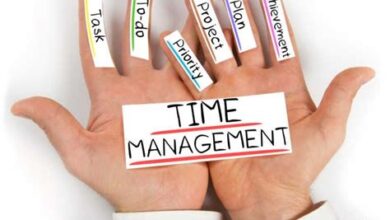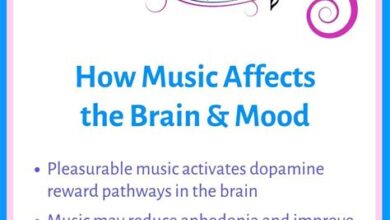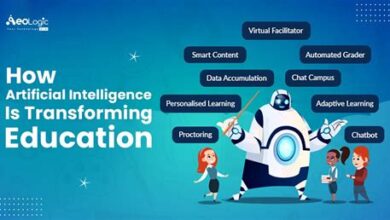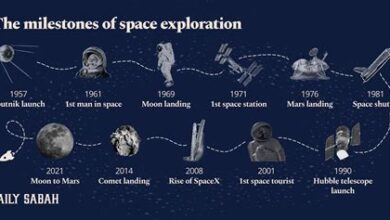The Psychology of Decision-Making: Why We Choose What We Do
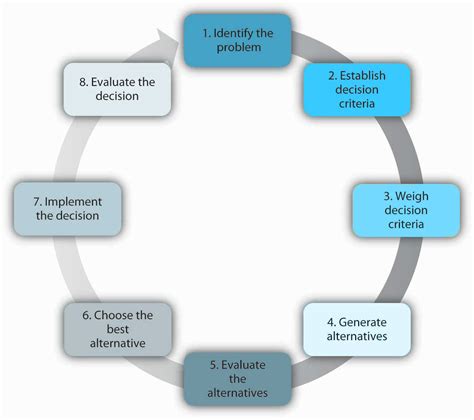
Unravel the complexities of the psychology behind our choices. This blog post delves into why we choose what we do, exploring the cognitive biases that form the bedrock of decision-making. We’ll examine heuristics, those mental shortcuts that subtly influence our selections, and uncover the profound role emotions play in shaping decision outcomes. Finally, we’ll equip you with strategies rooted in the field of psychology to enhance your decision-making process, empowering you to make more informed and effective choices in all aspects of life.Here’s the content section you requested: html
Understanding Cognitive Biases: The Foundation Of Decision-Making
At the heart of the psychology of decision-making lies the concept of cognitive biases. These are systematic patterns of deviation from norm or rationality in judgment. Essentially, they are mental shortcuts that our brains use to simplify information processing, often leading to decisions that are less than optimal. Recognizing these biases is the first step towards making more informed and rational choices.
Common Cognitive Biases:
- Anchoring Bias: Over-relying on the first piece of information received.
- Confirmation Bias: Seeking out information that confirms existing beliefs.
- Availability Heuristic: Making decisions based on readily available information.
- Loss Aversion: Feeling the pain of a loss more strongly than the pleasure of an equivalent gain.
- Bandwagon Effect: Following the crowd and adopting popular opinions or behaviors.
- Halo Effect: Allowing one positive trait to influence the overall perception of a person or thing.
Cognitive biases are pervasive and can affect various aspects of our lives, from financial investments to personal relationships. They operate largely unconsciously, making them difficult to detect and counteract. Understanding how these biases work is crucial for anyone seeking to improve their decision-making skills.
| Bias | Description | Example |
|---|---|---|
| Confirmation Bias | Tendency to favor information confirming existing beliefs. | Only reading news articles that align with your political views. |
| Anchoring Bias | Over-reliance on the first piece of information received. | Negotiating a price based on the initial offer, even if it’s unreasonable. |
| Availability Heuristic | Making decisions based on readily available information. | Believing that plane crashes are more common than car accidents because they receive more media coverage. |
| Loss Aversion | Feeling the pain of a loss more strongly than the pleasure of an equivalent gain. | Being more upset about losing $100 than being happy about gaining $100. |
The implications of cognitive biases extend beyond individual choices, influencing organizational behavior, market trends, and even public policy. By learning to identify and mitigate these biases, individuals and organizations can make more rational, objective, and ultimately, more successful decisions. Awareness is the key to overcoming these inherent flaws in our thinking processes.
The mind is a wonderful servant, but a terrible master. – Robin Sharma
This quote encapsulates the importance of understanding our cognitive processes. While our minds are capable of incredible feats, they are also susceptible to biases that can lead us astray. By becoming more aware of these biases, we can take control and make more informed decisions. Critical thinking and self-reflection are essential tools in this process.
Exploring Heuristics: Mental Shortcuts That Influence Our Choices
In the realm of the psychology of decision-making, humans often rely on mental shortcuts known as heuristics to simplify complex choices. These heuristics are efficient cognitive strategies that allow us to make quick decisions without exhaustively analyzing every detail. While they can be incredibly useful, they can also lead to biases and errors in judgment. Understanding these mental shortcuts is crucial for grasping why we make the decisions we do. They act as a filter, streamlining the information we process and guiding us toward a choice, often subconsciously.
Consider a scenario where you’re choosing a restaurant for dinner. Do you meticulously compare menus, reviews, and locations for every option? Or do you rely on a simpler method, like choosing the restaurant closest to you or the one your friend recommended? These are examples of heuristics in action. They help us navigate the daily deluge of decisions, saving time and cognitive energy. However, this efficiency comes with a trade-off; heuristics can sometimes lead us astray, causing us to make suboptimal choices.
| Heuristic | Description | Example |
|---|---|---|
| Availability | Overestimating the likelihood of events that are easily recalled. | Fearing plane crashes more than car accidents, despite statistics showing the opposite. |
| Representativeness | Judging the probability of an event based on how similar it is to a prototype. | Assuming someone is a librarian because they are quiet and enjoy reading. |
| Anchoring | Relying too heavily on the first piece of information received. | Negotiating a price based on the initial offer, even if it’s unreasonable. |
| Confirmation Bias | Seeking out information that confirms existing beliefs. | Only reading news sources that align with your political views. |
The impact of heuristics on our decisions is profound. They influence everything from the products we buy to the people we trust. By understanding these cognitive shortcuts, we can become more aware of our biases and make more informed choices. The following list outlines some common situations where heuristics can significantly affect our decision-making process.
- Financial Investments: Relying on recent market trends instead of long-term analysis.
- Medical Diagnoses: Overemphasizing common symptoms and overlooking rarer conditions.
- Hiring Decisions: Favoring candidates who fit a preconceived notion of the ideal employee.
- Purchasing Choices: Opting for brand names based on familiarity rather than objective quality.
- Relationship Judgments: Forming quick impressions based on limited interactions.
- Risk Assessments: Underestimating the likelihood of familiar risks and overestimating unfamiliar ones.
Availability Heuristic
The availability heuristic involves making judgments about the likelihood of an event based on how easily examples come to mind. If we can quickly recall instances of something happening, we tend to overestimate its probability. This can lead to distorted perceptions of risk and skewed decision-making. This shortcut can be particularly misleading when vivid or recent events dominate our memory, regardless of their actual frequency.
Representativeness Heuristic
The representativeness heuristic leads us to assess the probability of an event by comparing it to an existing prototype or stereotype in our minds. We often ignore base rates and statistical information, instead focusing on how similar something is to our mental representation of a category. This can result in inaccurate judgments and biased evaluations. For example, if someone is described as quiet, shy, and enjoys reading, we might assume they are a librarian, even though librarians are a relatively small percentage of the population.
Anchoring Heuristic
The anchoring heuristic describes our tendency to rely too heavily on the first piece of information we receive (the anchor) when making decisions. Even if the anchor is irrelevant or arbitrary, it can significantly influence our subsequent judgments. This effect is particularly strong when we are uncertain or lack knowledge about the subject matter. Being aware of this can drastically improve negotiation skills, and make you less susceptible to manipulation.
The Role Of Emotions In Shaping Decision Outcomes
Emotions play a pivotal role in the labyrinth of decision-making, often coloring our choices in ways we may not consciously recognize. While we often strive for rational thought, the psychology behind our decisions reveals that emotions are deeply intertwined with our cognitive processes. These feelings can range from fleeting sentiments to deeply ingrained attitudes, each capable of subtly or dramatically influencing the paths we choose.
Consider the impact of fear on investment decisions. An investor, driven by anxiety about potential losses, might prematurely sell stocks during a market downturn, even if long-term prospects remain positive. Conversely, excitement and optimism can lead to overconfidence, causing individuals to underestimate risks and make impulsive investments. These emotional undercurrents highlight the complex interplay between our feelings and our judgment.
| Emotion | Impact on Decision-Making | Example |
|---|---|---|
| Fear | Risk aversion, avoidance of potential losses | Selling stocks during a market downturn |
| Happiness | Optimism, increased risk tolerance | Making impulsive purchases |
| Sadness | Increased focus on details, preference for low-risk options | Choosing familiar brands over new ones |
| Anger | Increased risk-taking, desire for revenge or justice | Aggressive negotiation tactics |
Furthermore, emotions can significantly affect how we perceive and process information. For instance, if we hold a strong positive emotion towards a particular brand, we might be more likely to interpret ambiguous information about that brand in a favorable light, overlooking potential flaws or negative feedback. This emotional bias can lead to skewed perceptions and ultimately, biased decisions. It’s therefore essential to cultivate emotional awareness and integrate it into our decision-making process.
The following list highlights some of the many emotional influences that can sway our choices:
- Emotional Influences:
- Past Experiences: Memories associated with positive or negative feelings.
- Social Norms: The desire to conform to societal expectations and avoid disapproval.
- Personal Values: Aligning decisions with deeply held beliefs and principles.
- Mood: Temporary emotional states (happiness, sadness, anger) affecting judgment.
- Anticipated Regret: The fear of making a wrong decision and the potential for future regret.
- Trust: The level of confidence in the information source.
Ultimately, understanding the psychology of how emotions shape our decisions is crucial for making more informed and rational choices. By recognizing the influence of our feelings, we can mitigate potential biases and strive for a more balanced approach to decision-making.
Improving Decision-Making: Strategies From The Psychology Field
Improving decision-making is a key focus within the psychology field, offering various strategies to mitigate biases and enhance rational thought. By understanding how our minds can be tricked, we can implement techniques to make more informed and effective choices. These strategies range from simple checklists to more complex cognitive restructuring exercises, all aimed at optimizing decision outcomes.
| Strategy | Description | Benefit |
|---|---|---|
| Checklists | Using structured lists to ensure all factors are considered. | Reduces errors and oversights. |
| Cognitive Restructuring | Challenging and changing negative thought patterns. | Improves objectivity and reduces emotional influence. |
| Devil’s Advocate | Assigning someone to argue against a proposed decision. | Identifies potential weaknesses and risks. |
| Pre-Mortem Analysis | Imagining a decision has failed and identifying reasons why. | Proactively addresses potential failure points. |
One effective approach is to cultivate mindfulness, encouraging a greater awareness of our thoughts and emotions as they arise during the decision-making process. This allows us to recognize when biases might be influencing our judgment and to take a step back to reassess the situation more objectively.
Mindfulness is about being fully present with whatever is happening in the moment without judging it.
This practice is particularly useful in high-pressure scenarios where quick decisions are required.
Actionable Steps:
- Define Clear Objectives: Clearly outline what you aim to achieve with your decision.
- Gather Comprehensive Information: Ensure you have all the necessary data and perspectives.
- Identify Potential Biases: Recognize your own cognitive biases and how they might affect your judgment.
- Evaluate Alternatives Systematically: Use a structured approach to assess each option.
- Seek Diverse Perspectives: Consult with others who may have different viewpoints.
- Implement a Feedback Loop: Monitor the outcomes of your decisions and learn from your mistakes.
Furthermore, implementing structured decision-making processes can significantly improve outcomes. Techniques such as cost-benefit analysis, decision matrices, and scenario planning provide frameworks for systematically evaluating alternatives and considering potential consequences. By adopting these strategies, individuals and organizations can enhance their ability to make well-reasoned decisions that lead to positive results, aligning choices more closely with desired goals and values. Regular practice and refinement of these skills are essential for continued improvement.
